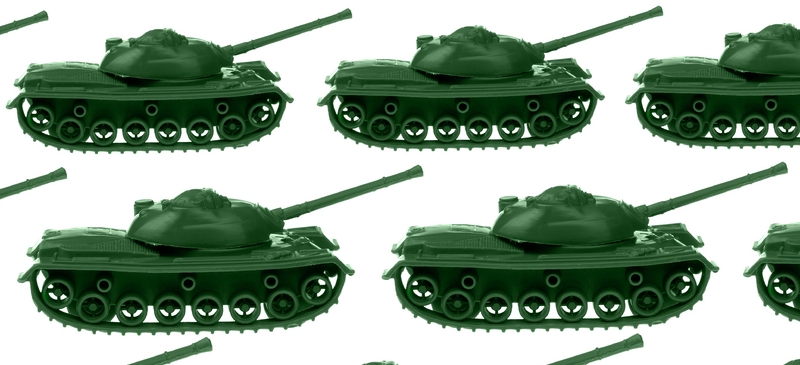
Europe's military ambitions
The European Union's 'Headline Goal', agreed at the Helsinki Summit in December 1999, calls for the creation of a 60,000-strong rapid-reaction force by 2003. Turning that goal into reality is extremely difficult. To deploy and sustain such a force in a combat zone for a year would require - given the need to rotate troops in and out of the area - the equivalent of about 45 brigades, plus the supplies and logistics needed to back them up, and relevant naval and air support.
However, the EU member-states currently lack many of these capabilities, particularly in 'C4ISR' (command, control, communications, computers, intelligence, surveillance and reconnaissance). They also lack air and sea transport and logistical support. Thus the 'donors' conference' which the EU plans for later this year - at which governments will pledge existing capabilities - will not be enough to create an effective reaction force. So the EU should begin a force planning exercise urgently.
The EU needs a modern, mobile broadband 'C4' system. It will also need independent 'ISR'. For that, as with C4, the EU should strive for capabilities that are interoperable with those of NATO (that is, European equipment should be compatible with, and complementary to, that of NATO). Yet the tasks that the EU's expeditionary force is likely to undertake - humanitarian relief, peacekeeping and peace enforcement - will probably not require satellite imagery of a military quality. Most, if not all, the EU's needs could be met either by commercial satellites or by photos provided by the US.
What Europe does need is its own multinational ground surveillance capability, on the model of NATO's fleet of early-warning AWACS aircraft, so that EU aircraft with powerful radars can monitor what is going on in a battlezone. The EU should also collectively purchase unmanned reconnaissance aircraft, such as America's Global Hawk.
The EU should establish a sea command and an air transport command, to manage the movement of men and equipment for the expeditionary force, and to provide air-to-air refuelling. They could control multinational formations, such as an EU squadron of transport planes, or task forces formed by pooling national assets. These commands will need modern equipment, which should preferably be standardised and European-made.
In the longer term the EU should consider establishing a European strike capability, which could be based around unmanned aircraft carrying supersonic cruise missiles. The final step in this force planning process would be for the EU governments to agree upon the national contributions that each would make to the expeditionary force, plus the supporting air and naval forces.
While interoperability between these European forces and NATO is highly desirable, EU members should give priority to interoperability among the Europeans, for it is they who will shoulder the burden of missions involving long-term deployments, such as in Bosnia or Kosovo. Equipment ranging from satellite-guided ammunition to the night-fighting devices used by infantry should be interoperable throughout Europe.
The fulfilment of the headline goal will require a major capital investment. But the reality is that no EU country is likely to increase its defence budget. So how can Europe generate the necessary resources? NATO could save some money by spending more of its commonly-funded budget on commercially- available, as opposed to military, technologies and supplies. Thus NATO could find a way to start financing its urgently-needed airborne ground surveillance programme.
The EU itself should organise common procurement of assets such as aircraft for transport and air-to-air refuelling. These purchases should be made through a common EU fund to which all member-states would contribute. The fund should be kept separate from the EU budget, reflecting the fact that European defence is an inter-governmental, rather than a supranational activity.
There is still a lot of money to be saved in national defence budgets. Many governments could slim down parts of their armed forces. They should outsource non-frontline activities wherever possible, eliminate duplication between the services, and introduce modern business practices to the civilian side of defence administration.
Governments should review all procurement and R&D programmes, cancelling those for which off-the-shelf or commercial solutions are available, as well as those which duplicate work going on in other countries. More co-ordination of the EU governments' R&D programmes - on which they spend a combined $10 billion a year - and more industrial co-operation would do a lot to help.
If the EU governments took the above steps, their armed forces could be modernised and reorganised within ten years. These moves towards integration will not lead to a European army, for which the political will does not exist. But they will enable the EU to take more responsibility for Europe, and to act alongside its NATO allies. The creation of an EU expeditionary force will enable Europe to act in solidarity with its partners where common interests are at stake, but will also allow Europe to keep its own backyard and immediate periphery in good order. This capability-oriented approach will strengthen NATO and enhance Europe's ability to act beyond the realm of economics.
